This step by step diy woodworking project is about planter box with storage plans. I have designed this simple planter box that is made basically from 1×4 boards so you can have nice flowers in the garden, as well as some useful storage space that is also hidden from unwanted eyes. You can adjust these planter plans to suit your exact needs. If you enjoy my design, don’t forget to take a look over the rest of my free plans HERE.
There are so many designs and materials to choose from, that we really recommend you to spend some time researching the most suitable plans for your needs. If you still haven’t found what you are looking for, we strongly recommend you to pay attention to these instructions and to check out the related projects, if you want to get more ideas and potential projects for your home and garden. See all my Premium Plans HERE.
Projects made from these plans
Planter Box with Storage Plans
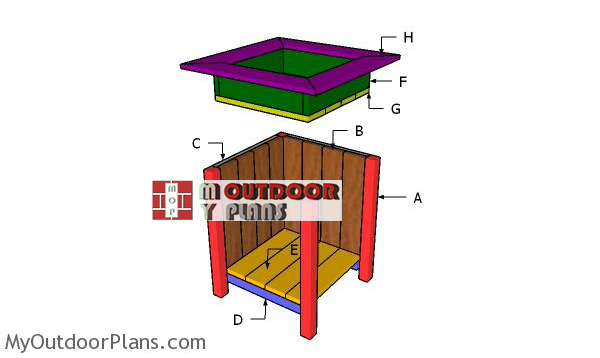
Building-a-planter-box
Cut & Shopping Lists
- A – 4 pieces of 2×2 lumber – 20″ long LEGS
- B – 16 pieces of 1×4 lumber – 18″ long PANELS
- C – 8 pieces of 1×4 lumber – 14″ long CLEATS
- D – 2 pieces of 1×2 lumber – 14″ long CLEATS
- E – 4 pieces of 1×4 lumber – 14″ long BOTTOM
- F – 2 pieces of 1×4 lumber – 14″ long, 2 pieces – 12 1/2″ long LID FRAME
- G – 4 pieces of 1×4 lumber – 14″ long LID BOTTOM
- H – 4 pieces of 1×4 lumber – 19 1/2″ TRIMS
- 7 pieces of 1×4 lumber – 8′
- 1 piece of 1×2 lumber – 3′
- landscape fabric
- 2 1/2″ screws, 3 1/2″ screws
- soil
Tools
![]() Hammer, Tape measure, Framing square, Level
Hammer, Tape measure, Framing square, Level
![]() Miter saw, Drill machinery, Screwdriver, Sander
Miter saw, Drill machinery, Screwdriver, Sander
![]() Post hole digger, Concrete mixer
Post hole digger, Concrete mixer
Time
Related
DIY Planter Box with Storage

Building-side-panels—storage-planter
The first step of the project is to build the panels for the planter box. Lay the 1×4 slats on a level surface and then attach the cleats with 1 5/8″ screws. Drill pilot holes before inserting the screws to prevent the wood from splitting. Leave no gaps between the slats and align the edges flush.
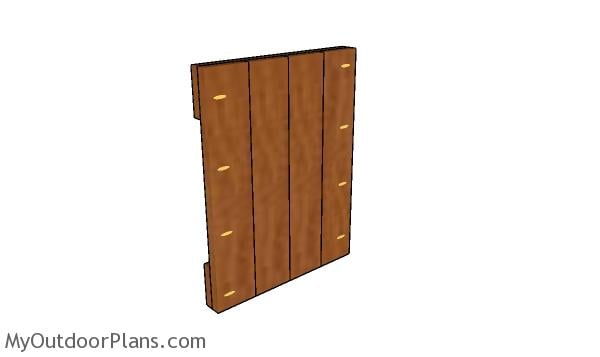
Drilling the pocket holes
Drill pocket holes along the sides of the panels, as shown in the plans.
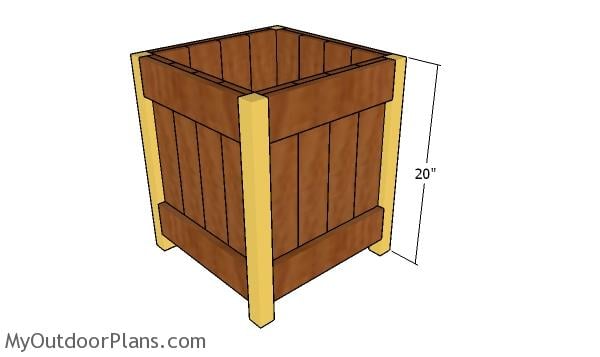
Assembling the planter box
Use 2×2 lumber for the corner legs. Use 2 1/2″ screws to secure the panels to the legs. Leave no gaps between the components and make sure the corners are square.
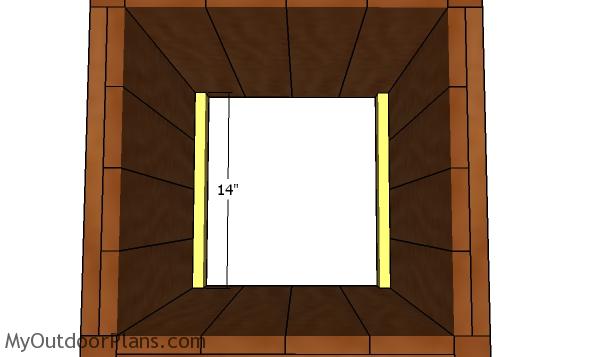
Fitting the cleats
Fit the 1×2 cleats to the interior of the planter box. Drill pilot holes and use 1 5/8″ screws to secure them to the walls.
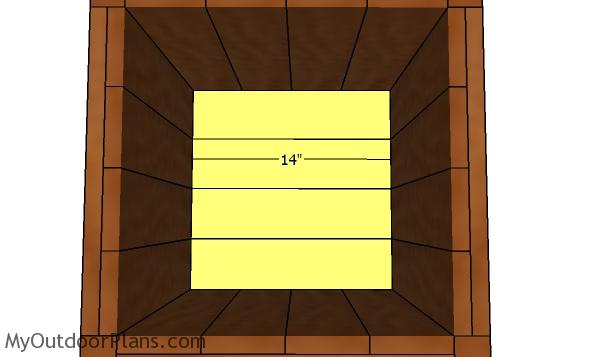
Fitting the bottom slats
Attach the 1×4 slats to the cleats and insert the 1 5/8″ screws.
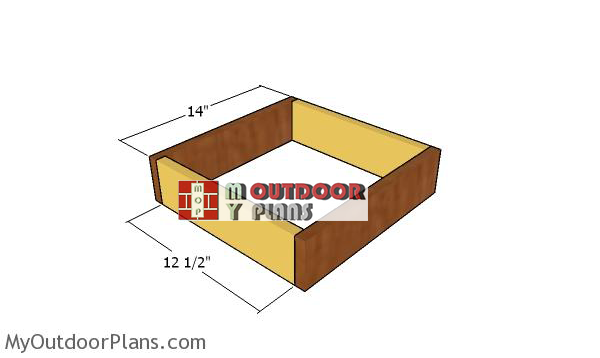
Building-the-lid-frame
After building the planter box, we need to assemble the lid. Therefore, make the frame for the lid from 1x4s. Align the edges and make sure the corners are square. Drill pilot holes and insert 1 5/8″ screws to lock the components together tightly.

Fitting the bottom slats to the lid
Attach the 1×4 slats to the frame. Align the edges flush and leave no gaps between the components. Drill pilot holes and insert 1 5/8″ screws.
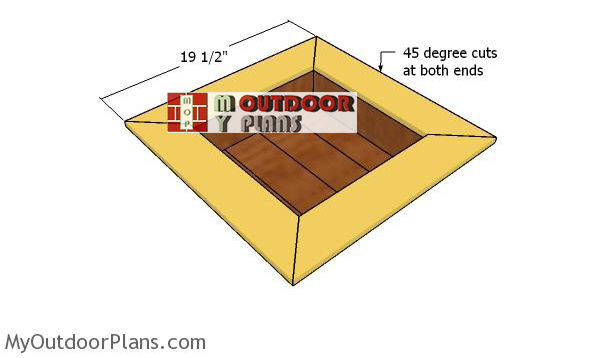
Fitting-the-top-trims
Next, you need to cut and attach the decorative trims. Use a miter saw to make 45 degree cuts at both ends of the trims and secure them to the lid frame. Use 8d nails to lock the trims into place and one to another. Leave no gaps between the trims and align the edges flush for a professional result.
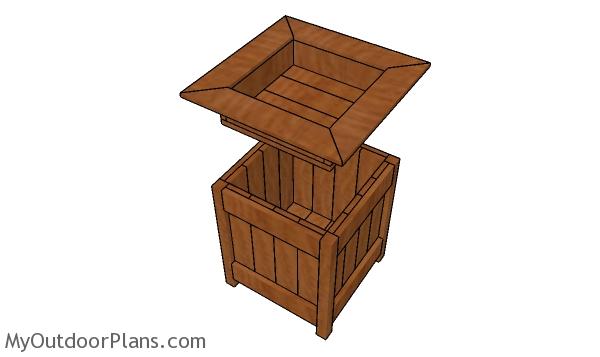
How to build a planter box with storage
Fill the holes with wood putty and then smooth the surface with 120-220 grit sandpaper. Apply a few coats of paint or stain over the components to enhance the look of the flower bed. Make sure the products are not toxic.
You can take the lid off and use the planter box for storage. The space will be really useful to sore hoses and other garden tools.
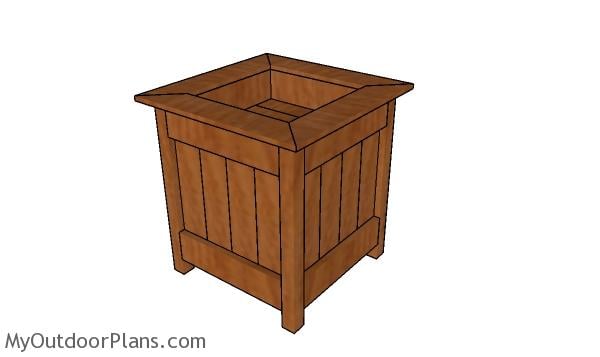
Planter Box with Storage Plans
This is a simple woodworking project, so any person with basic diy skills can get the job done in a few hours. If you like my project, I recommend you to take a look over the rest of my woodworking plans HERE. Choose from thousands of free designs and fill your life with DIY joy!
If you want to get PREMIUM PLANS for this project, in a PDF format, please press GET PDF PLANS button bellow. Thank you for the support.
This woodworking project was about planter box with storage plans. If you want to see more outdoor plans, we recommend you to check out the rest of my step by step projects. LIKE us on Facebook and Google + to be the first that gets out latest projects.

